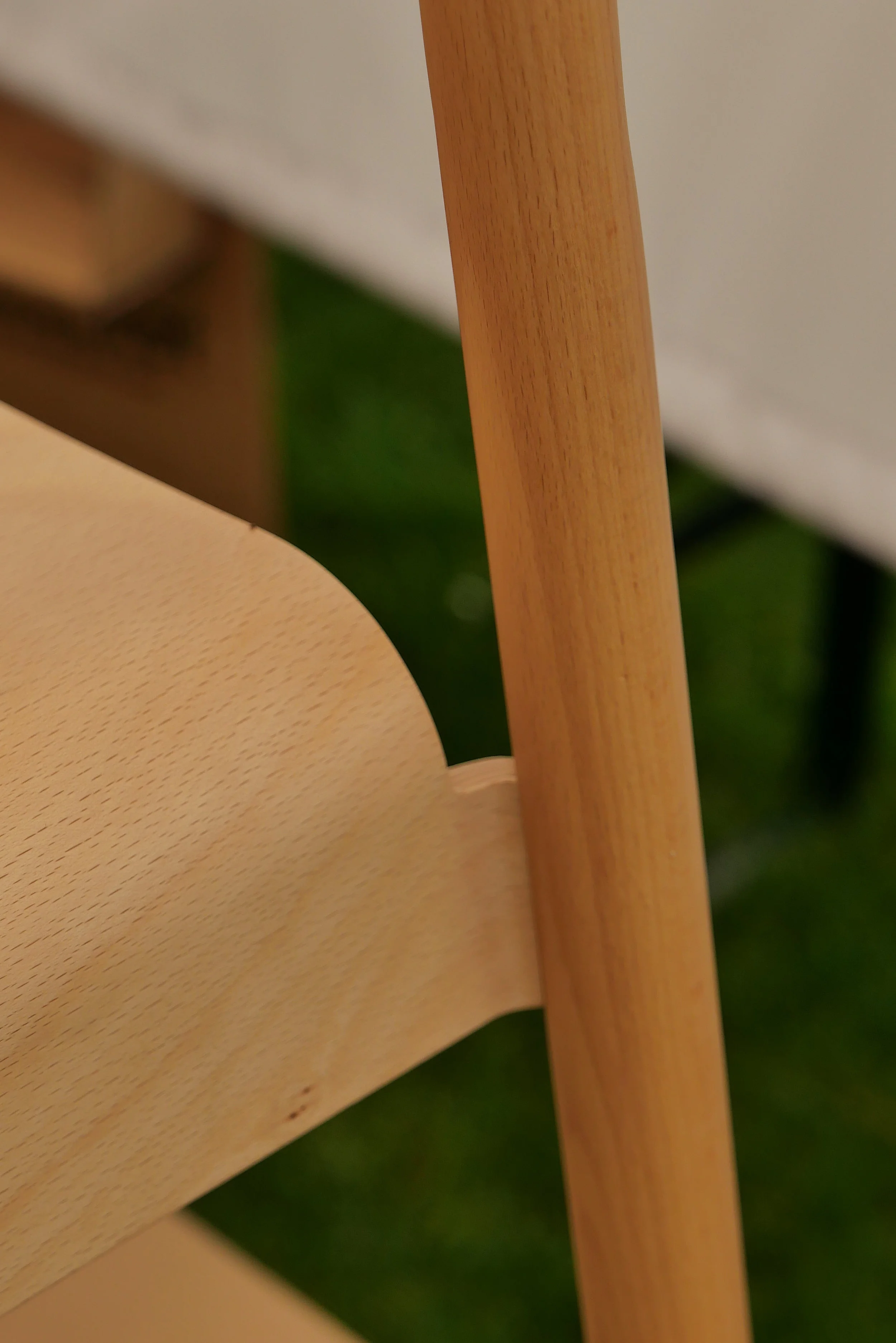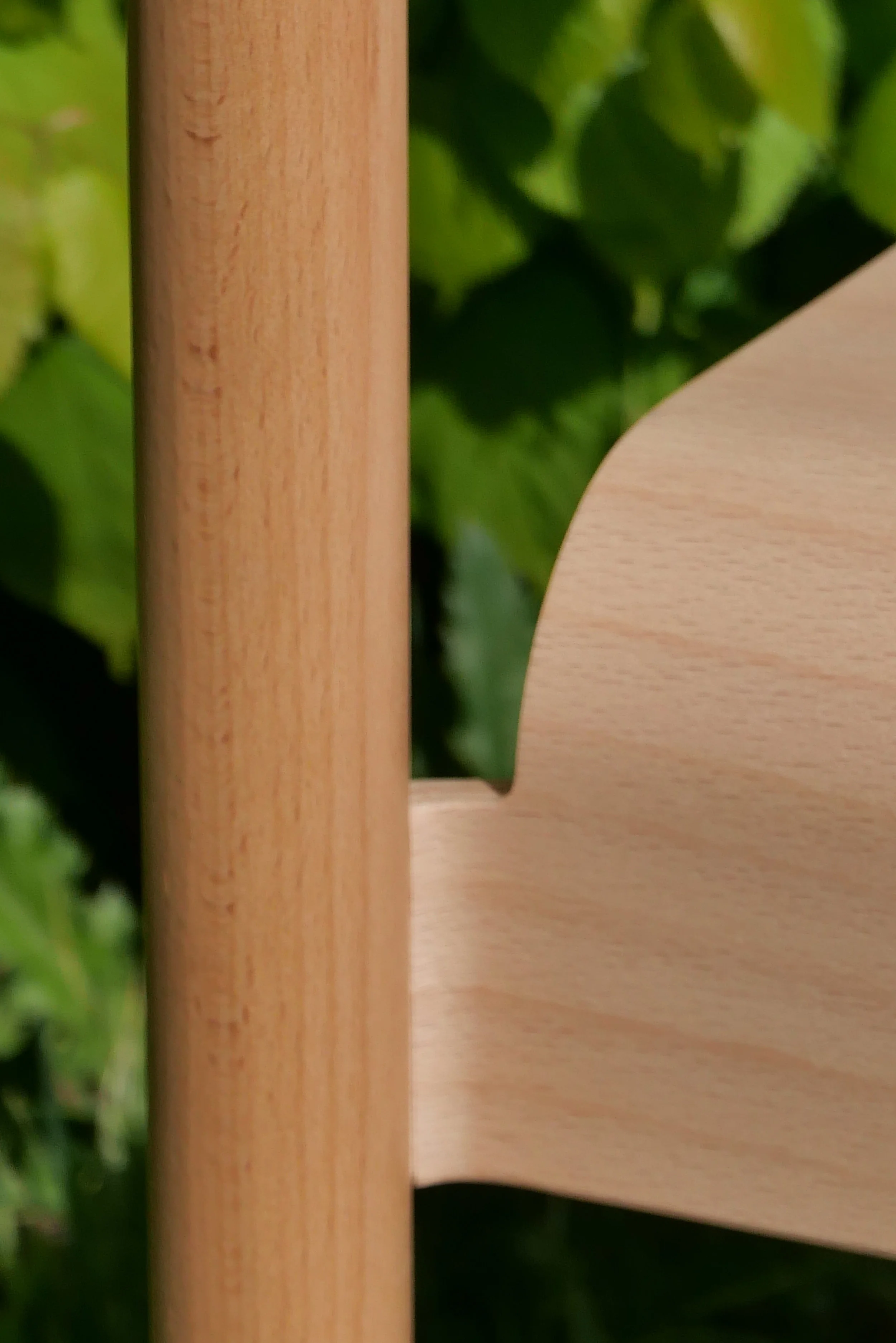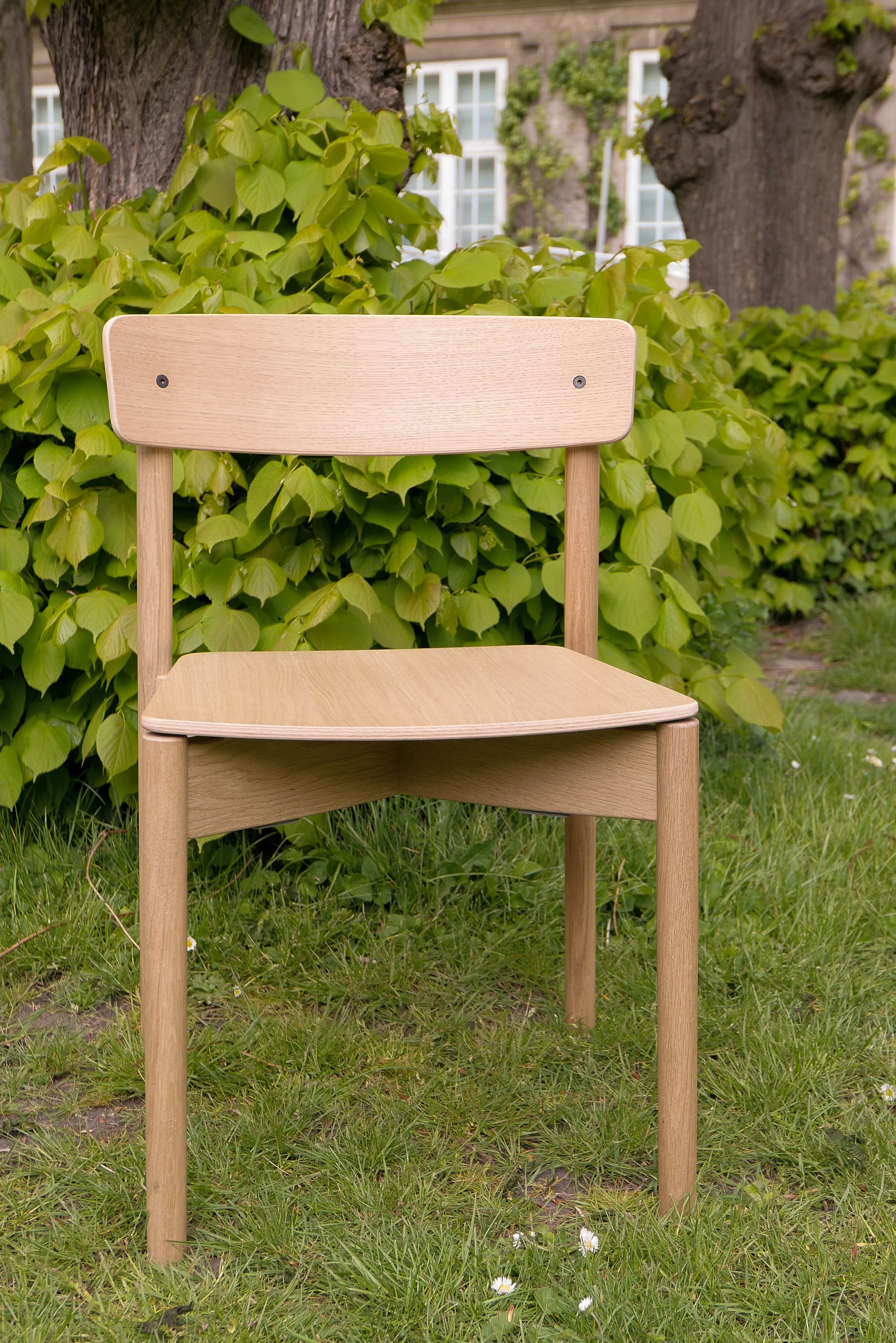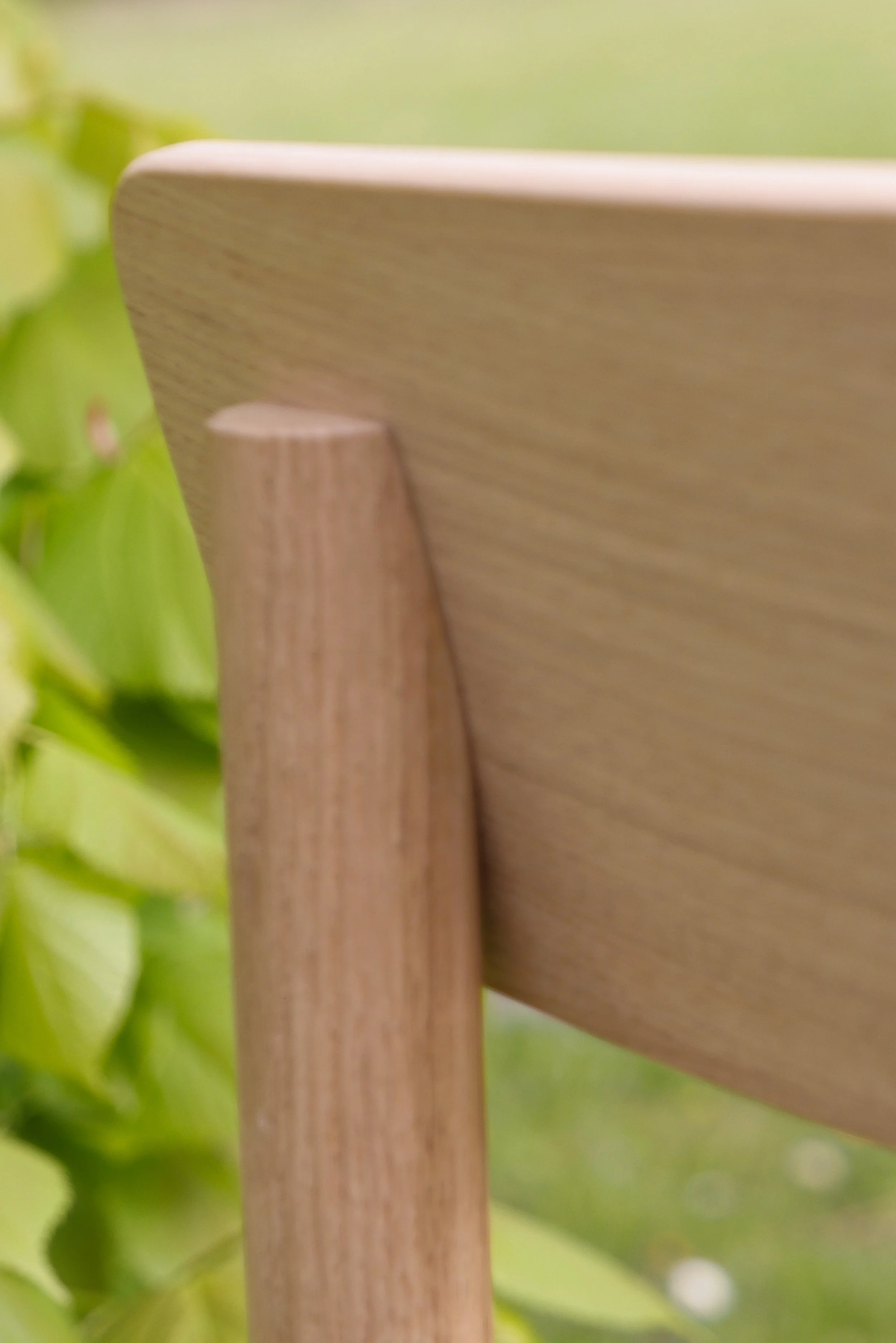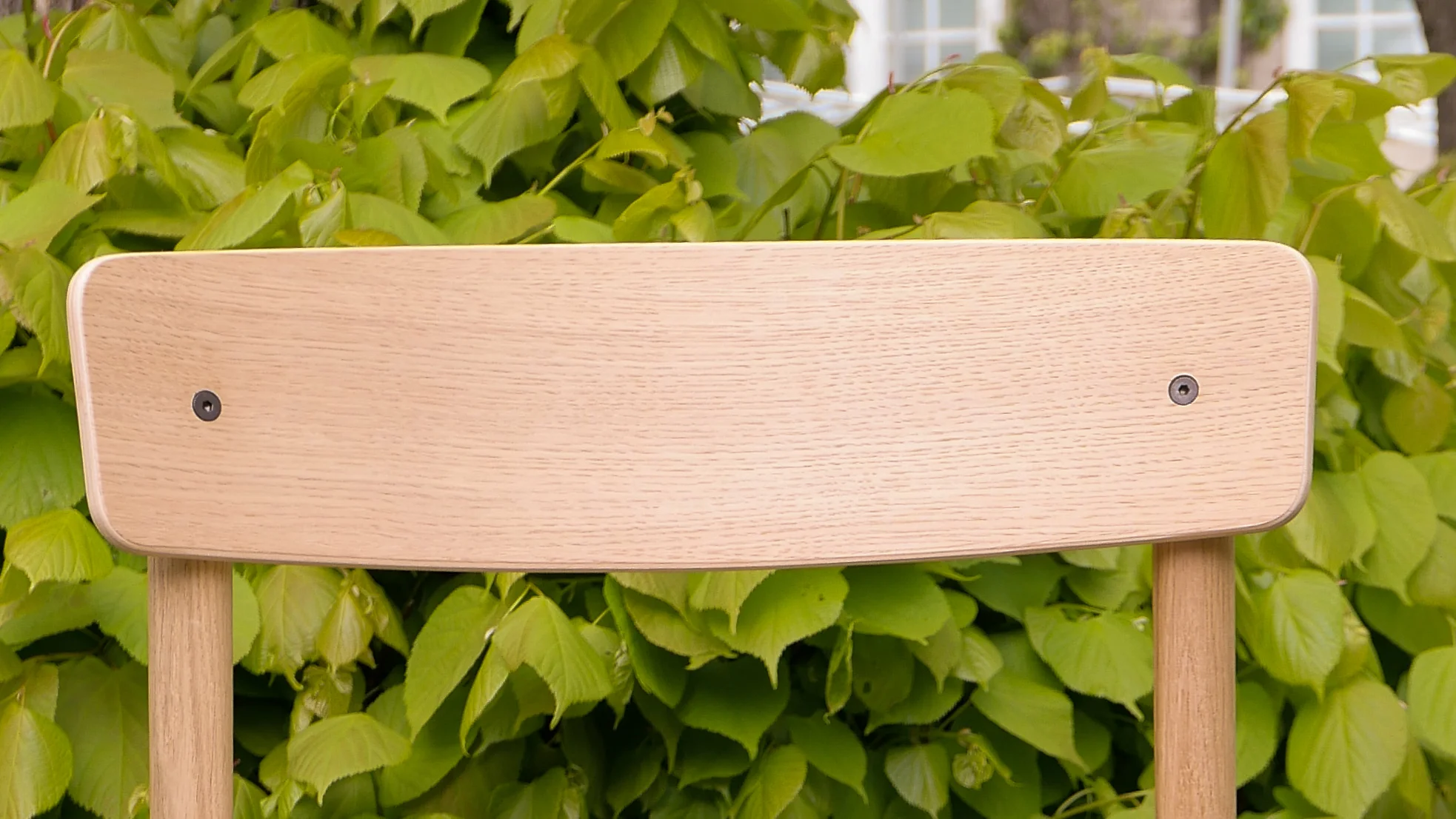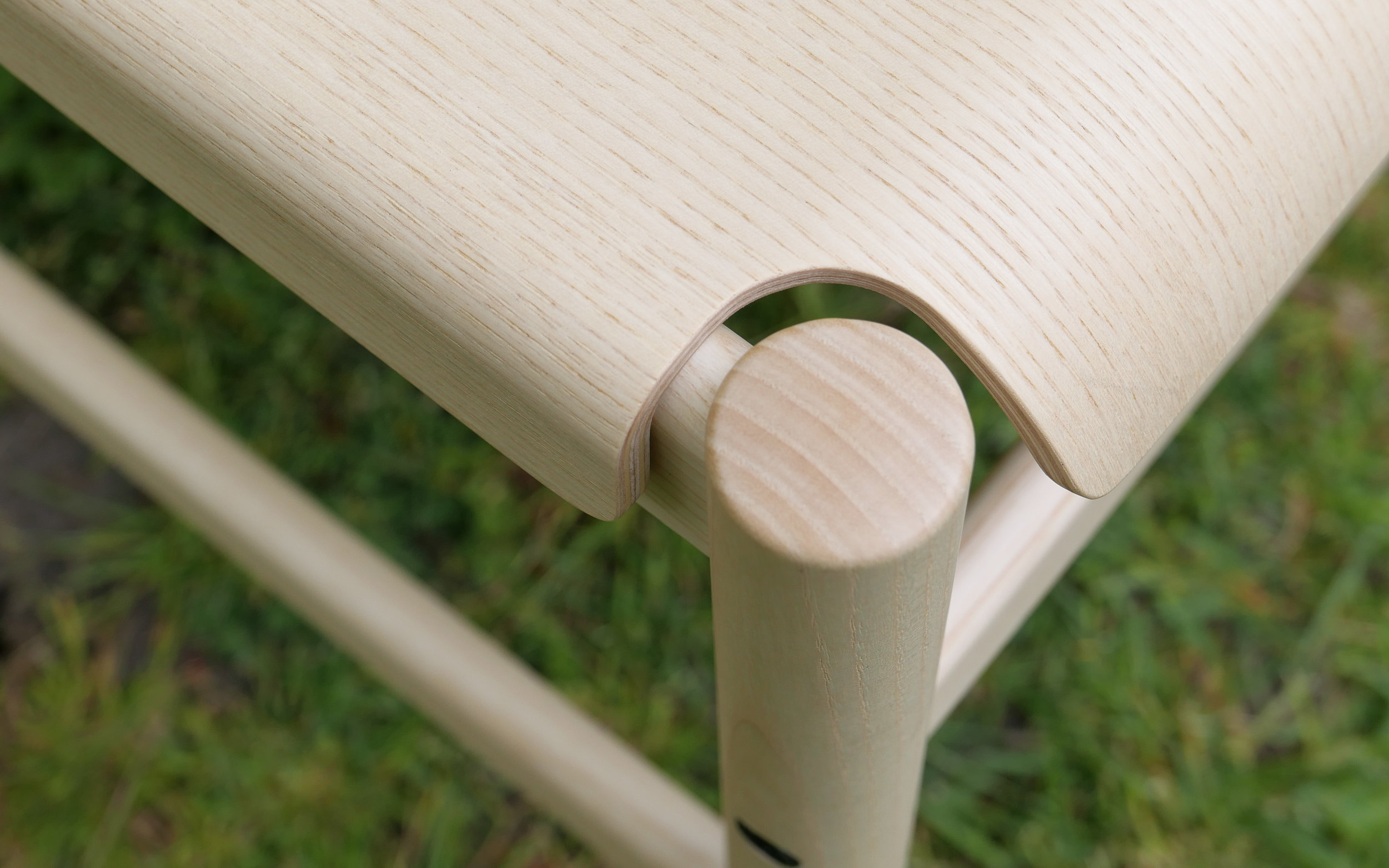the recent launch of three new chairs from TAKT
/Design X Change at Designmuseum Danmark two weeks ago was my first chance to see the three new chairs that were launched a month before by a new Danish furniture company called TAKT.
Not only are the designs new but the marketing is innovative because, from the start, the company will market on-line direct to their customers. By keeping the cost of marketing as low as possible "in a transparent way" and by using sustainable materials, then they can "make quality goods more accessible."
With this approach and by working with a number of established designers, they clearly echo the principles of FDB in the 1940s and 1950s when they first marketed good-quality modern furniture designed by well-established designers to make good, well-made furniture of a high quality.
In this initial launch by TAKT there are three chairs. Design and development took 18 months and the chairs are made for them by the furniture maker Kvist - a well established Danish company.
The chairs are beautifully and precisely made and well finished. By focusing on perfectly-cut joinery with well-designed mortices or pegs or channels to hold the separate pieces together, then the parts of the chair can be thinner and therefore lighter in weight.
Each chair has a distinct character but you can see links between the designs … for a start they all make the best use of high-quality plywood for seats and back rests and the Tool Chair designed by Rasmus Palmgren is almost a text-book example of how to exploit all the best characteristics of plywood. The plywood of the seat is bent down on each side to give it strength and the front edge is simply held in a channel is a front frame in bent wood and the vertical sides are flared out at the back to form tabs that act like mortices to hold the seat into the bent-wood frame of the back.
Cross Chair by English designers has echoes of the classic stacking chair designed by Vilhelm Wohlert in the 1950s for the art museum at Louisiana. The TAKT chair has two h-shaped frames that cross over under the seat using interlocking slots at the intersection and giving the chair its name. The curved back rest, fixed across the uprights, is simple and elegant but what is impressive is the way it clicks into place as you assemble the chair because Cross Chair is delivered packed flat. That click is testament to the precision of the cutting of the joints give the chair a sense of precise engineering unusual with timber. Another very nice detail is that the ends of the cross rails are curved down - to drop the tenon down further where it is housed in a mortice at the top of the front legs but the top of the leg is also just slightly lower so does not press hard against the underside of the seat to give a more refined design and a slight emphasis to the line of the seat by having that space.
The third chair, Soft Chair by the Danish designer Thomas Bentzen, has a strong sense of Danish design from the late 1960s rather than the 1950s with distinct and marked verticals - so with echoes of the Ferry Chair by Wegner. The legs are a uniform thickness rather than being tapered and are vertical, rather than splaying out, and there are horizontal stretchers or cross rails between the legs. This framework supports an ingenious seat and backrest in plywood where both are curved sharply round at the edge to grasp the frame. It looks almost like leather draped across the frame but there are clever fixings holding both seat and back in place. Despite the apparent complexity of the design it has strong parts with simple fixings so again it is delivered flat.
Part of the team at TAKT is Nicholai de Gier who teaches at the Royal Academy. He wrote a seminal work on chair design - Chairs' Tectonics that was published by The Royal Academy of Fine Arts School of Architecture in 2009. In the book he classifies the form of construction for different types of chair and that same attention to detail and an understanding not only of style but techniques of construction is applied to the new collection from TAKT. It is important to emphasise that it is a strong part of the Danish design tradition to reference earlier designs but take them forward or experiment with alternative solutions to specific problems.
TAKT have a good on-line site - crucial for this form of marketing - that links to an 'image bank' with photographs of the chairs from all angles and with photographs of details.
Looking at the chairs as you walk around them you can see respected here a clear aim in classic Danish design to make furniture that is beautiful from any angle.
The display at Design X Change was in a marquee in the great central courtyard of the design museum. It is a very pleasant temporary venue for museum events but the light was oddly flat and not good for taking photographs. The team from TAKT were incredibly patient and let me take chairs outside to take photographs. Please note however that these chairs are not designed or made for garden use.
Tool Chair
Designed by Rasmus Palmgren from Finland
Beech
natural, black, grey, pale blue, mid blue
FSC-certified wood
delivered assembled
Cross Chair
by English designers Luke Pearson and Tom Lloyd of Pearson Lloyd
Oak and matt black
an option is with the seat upholstered in the eco-labelled wool Hallingdal from Kvadrat or with aniline leather
FSC-certified wood
Soft Chair
by the Danish designer Thomas Bentzen
Ash
FSC-certified wood



